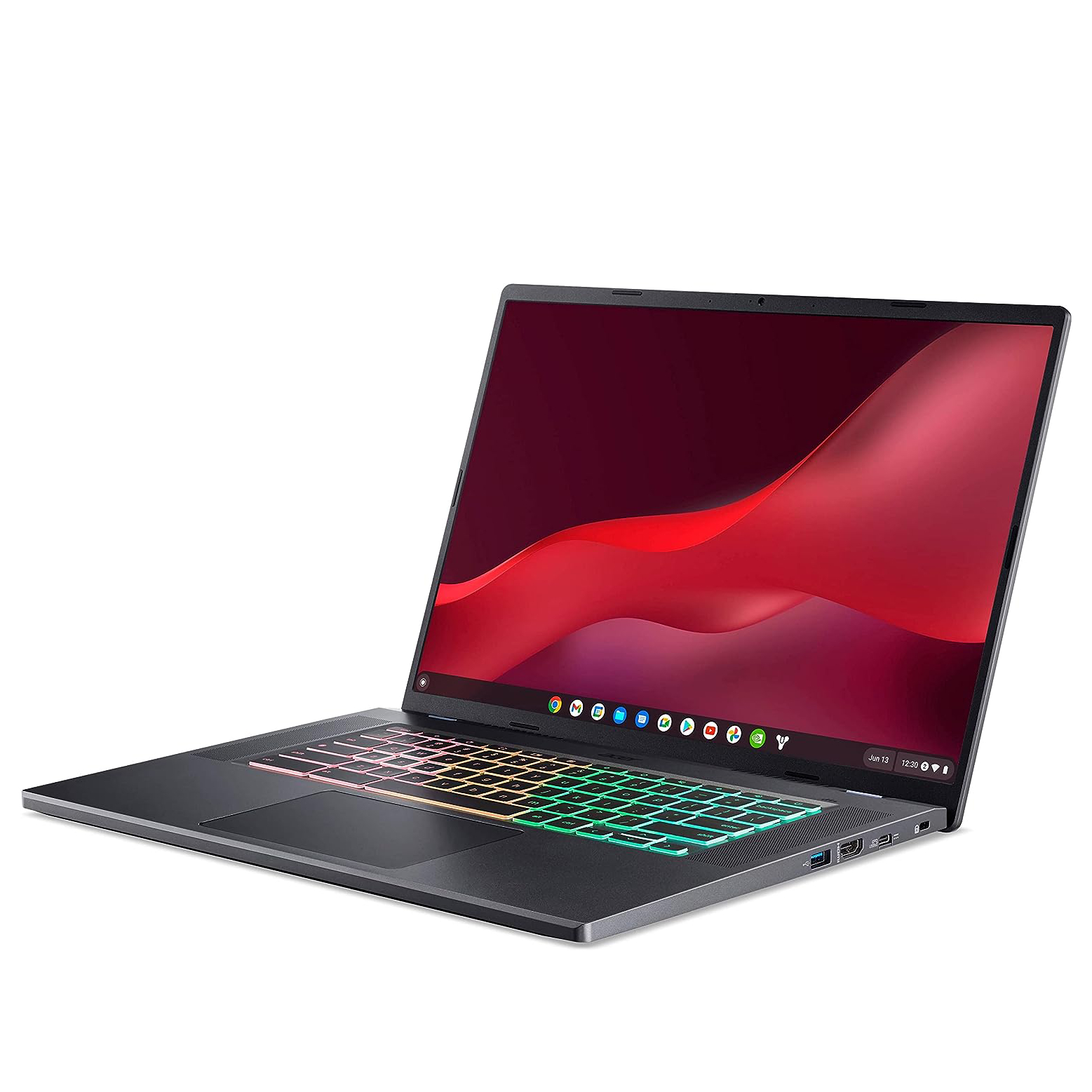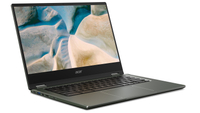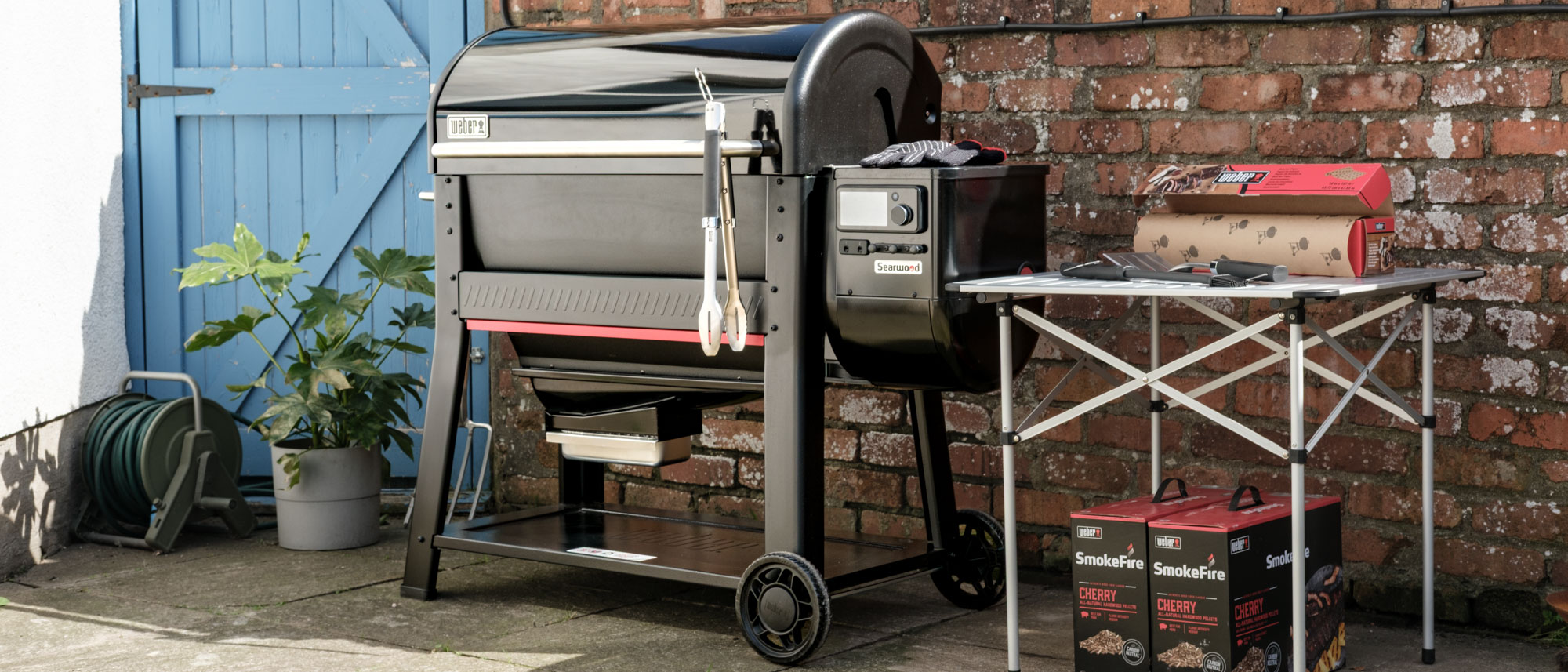Best Chromebooks in 2025: our top picks
These Chromebooks are great, affordable alternatives to Windows PCs and MacBooks
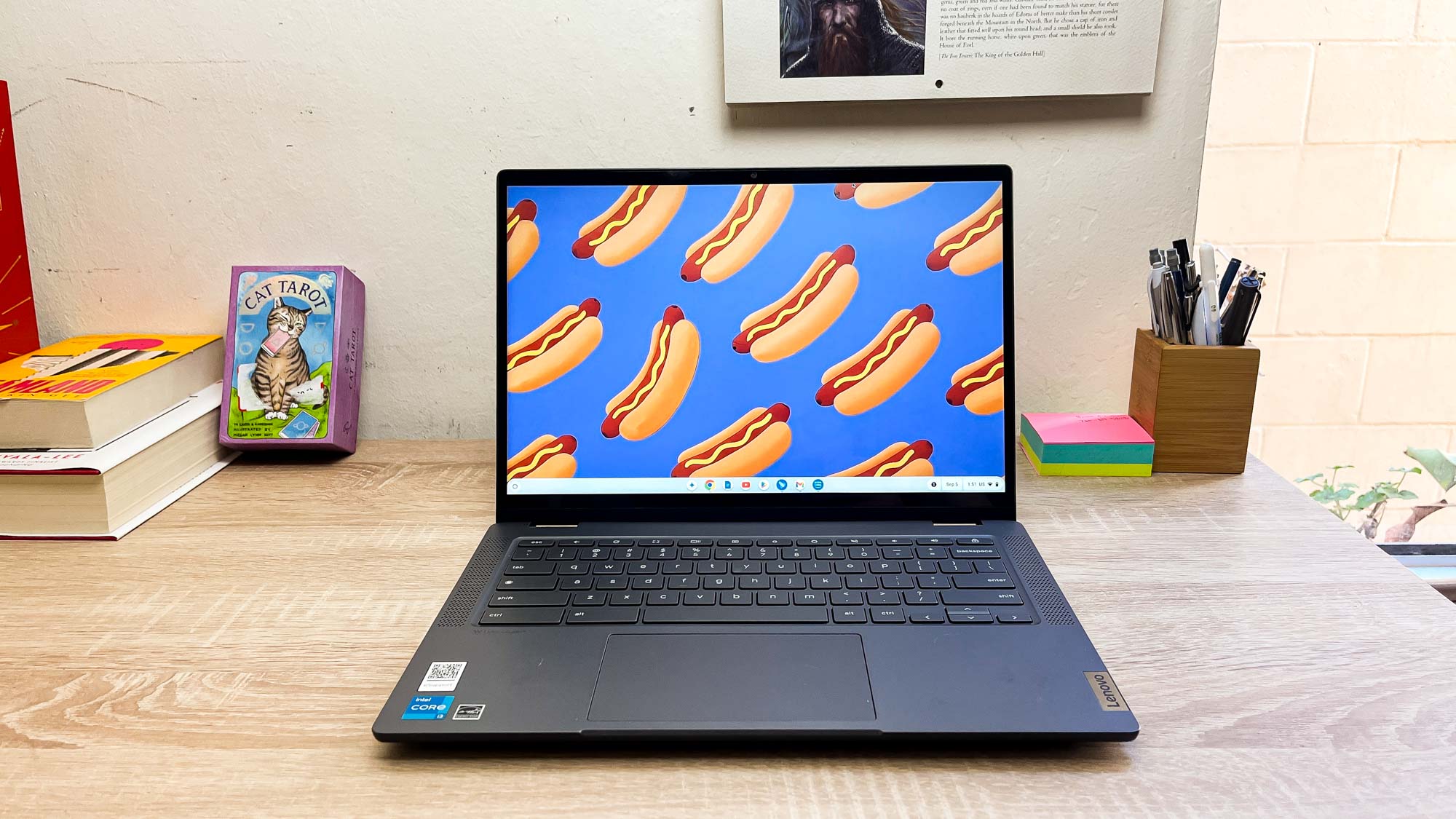
As a laptop power user, I never thought I'd love Chromebooks as much as I do. But for those clutch moments of quick productivity, creativity, and plenty of binge-watching, the best Chromebooks are perfect.
And we should know. My team and I review dozens of Chromebooks every year from the top laptop companies, and whether its getting intense in Google Docs, skipping across multiple Chrome tabs or even streaming games with Nvidia GeForce Now, these are very capable machines at a fraction of the cost of more fully-fledged laptops.
Plus, you get an ocean of different form factors for different budgets in the Chromebook space. My current favorite is the Lenovo Flex 5i Chromebook Plus — a great option for most folk because it's a cheap, durable ChromeOS 2-in-1 with a bright touchscreen and a comfy keyboard.
Those on a budget can get by with a plucky Lenovo Chromebook Duet tablet, and for those who want to be able to repair and upgrade their, the Framework Chromebook is a tinkerer's dream.
Read on for more recommendations, fuller explanations and a detailed breakdown of our battery testing so you can pick the best Chromebook for your needs.
The quick list
In a hurry? Here's a brief overview of the laptops on this list, along with quick links that let you jump down the page directly to a review of whichever laptop catches your eye.
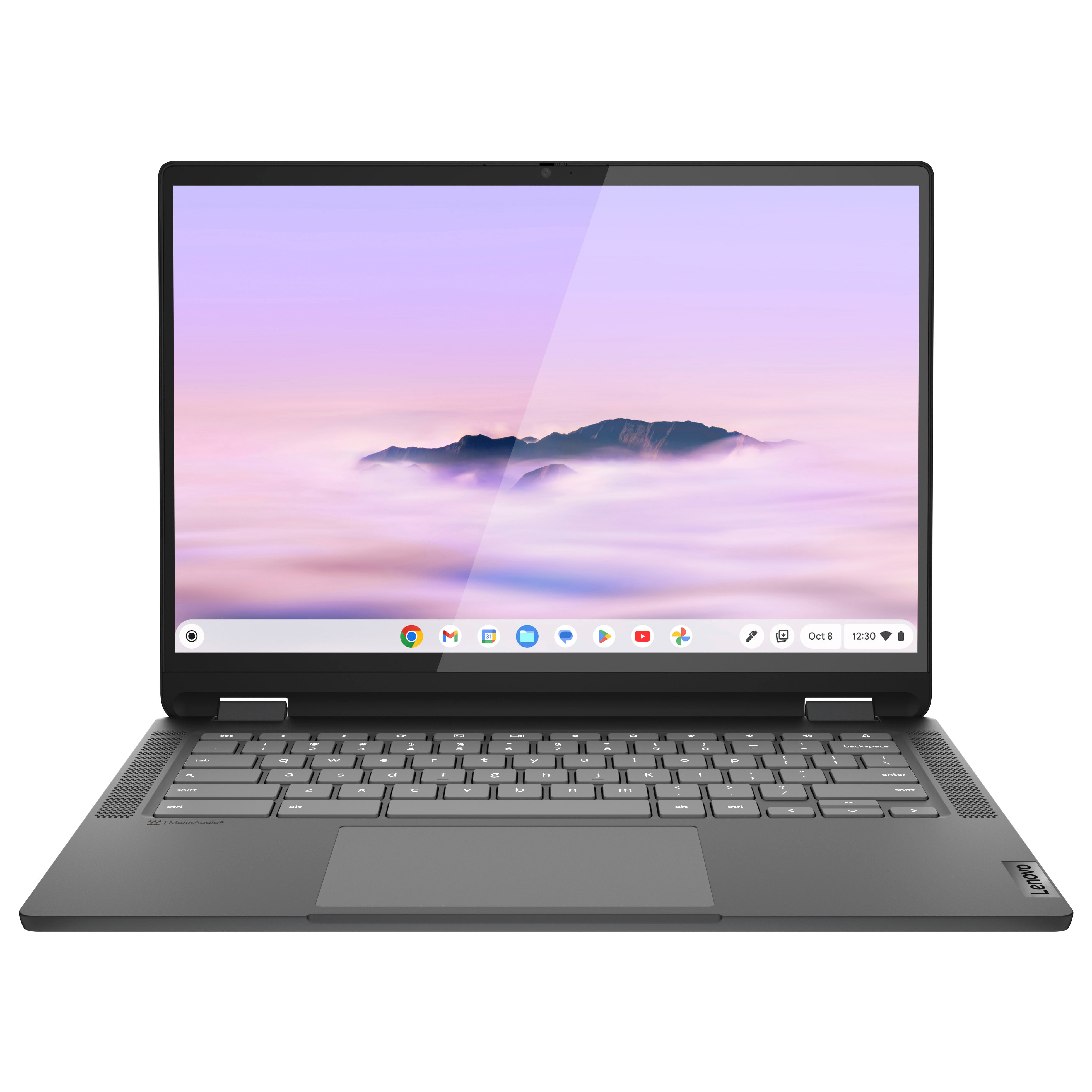
I recommend the Lenovo Flex 5i Chromebook Plus as the best Chromebook for most because it gives you everything you need at an affordable price, without feeling cheap. The 1200p touchscreen is lovely, and the keyboard feels good to type on.
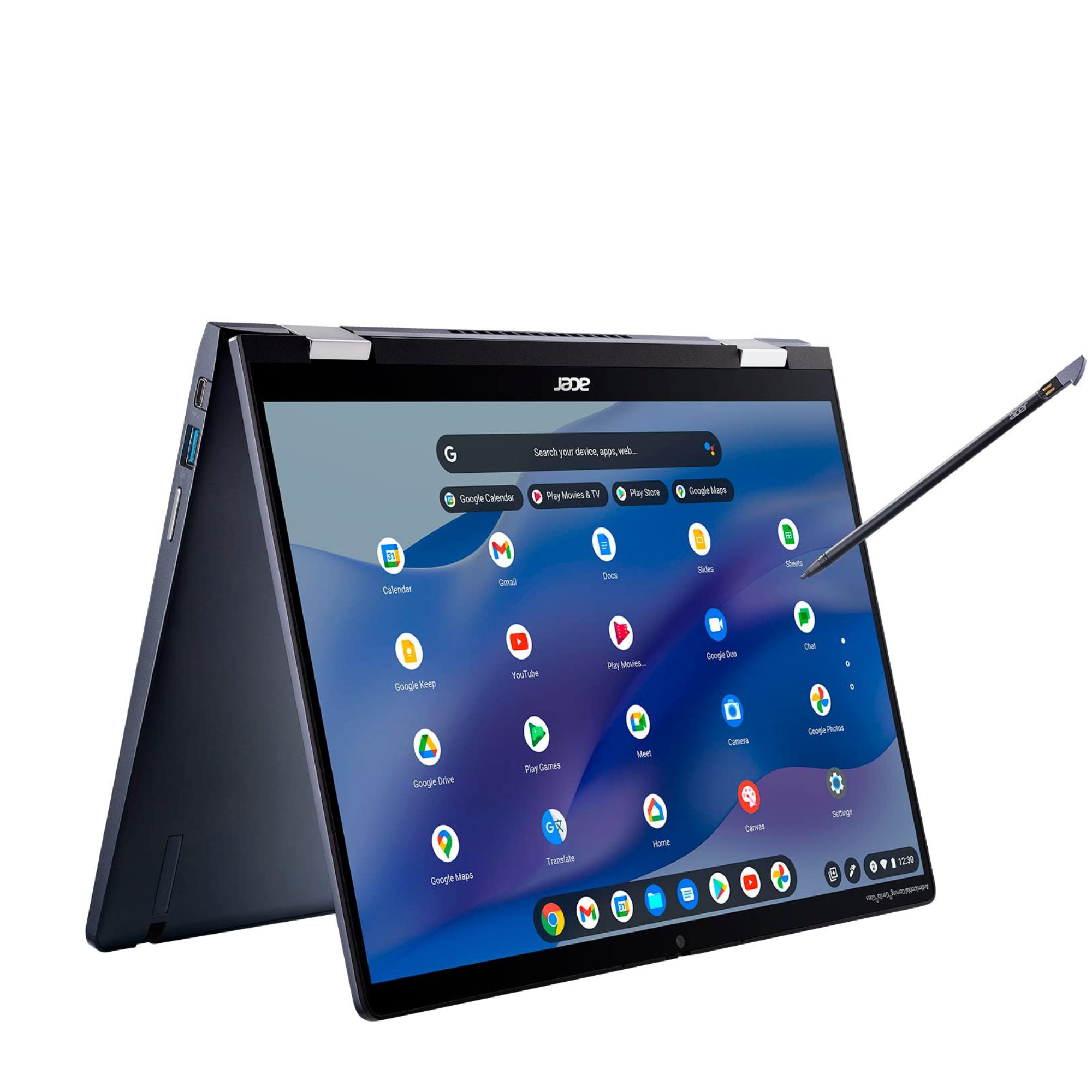
The Acer Chromebook Spin 714 is pricey but delivers good battery life, strong performance and a stylus and mouse packed in, making it our top pick for best 2-in-1 over the Flex 5i because the Spin's screen is brighter and more colorful—plus you get the stylus for free.
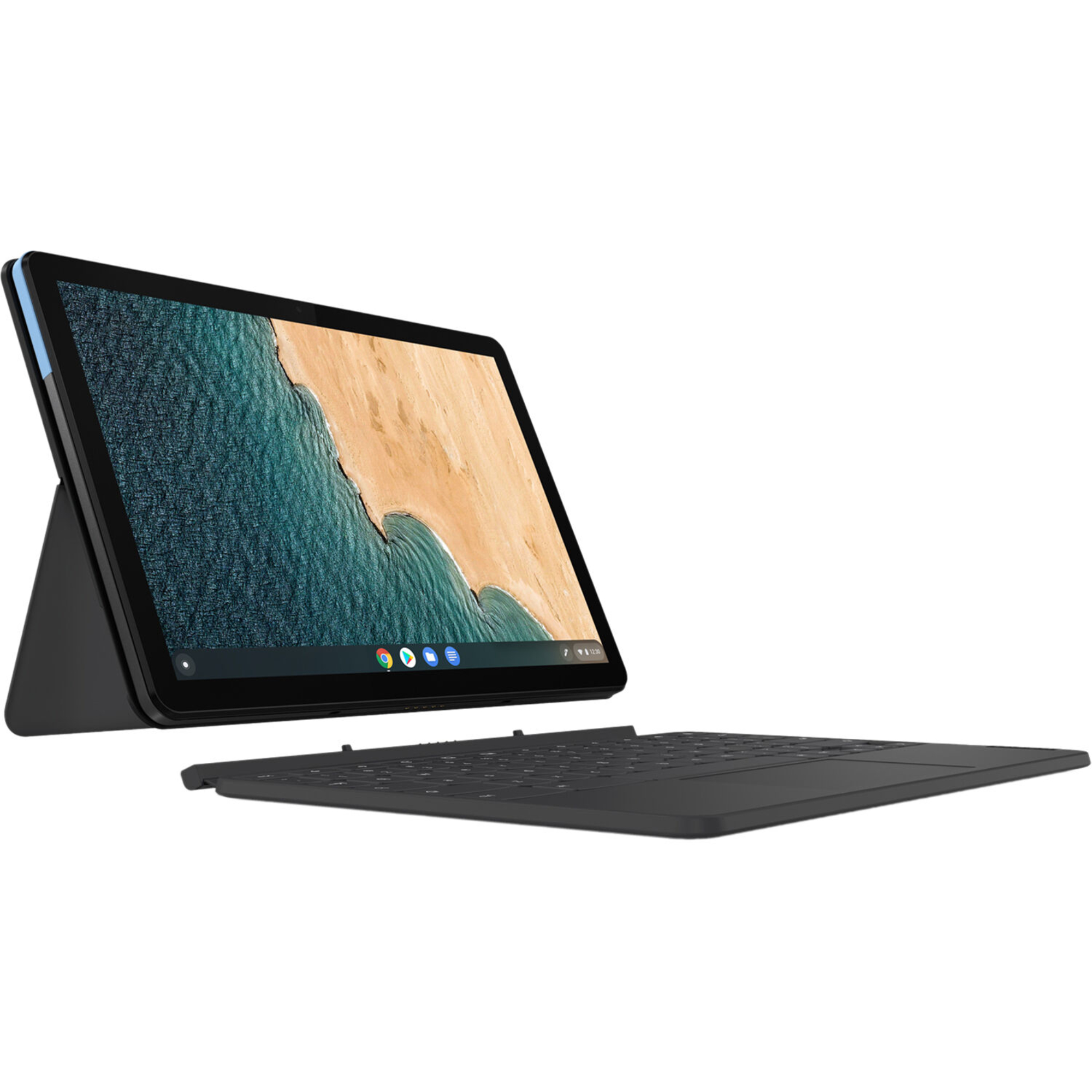
The pricier Lenovo Chromebook Duet 3 is a well-built Chrome tablet that offers a nice screen and enough power to get work done. It's suited to browsing the web or remote learning, and the included keyboard cover is good enough for writing emails or short assignments.
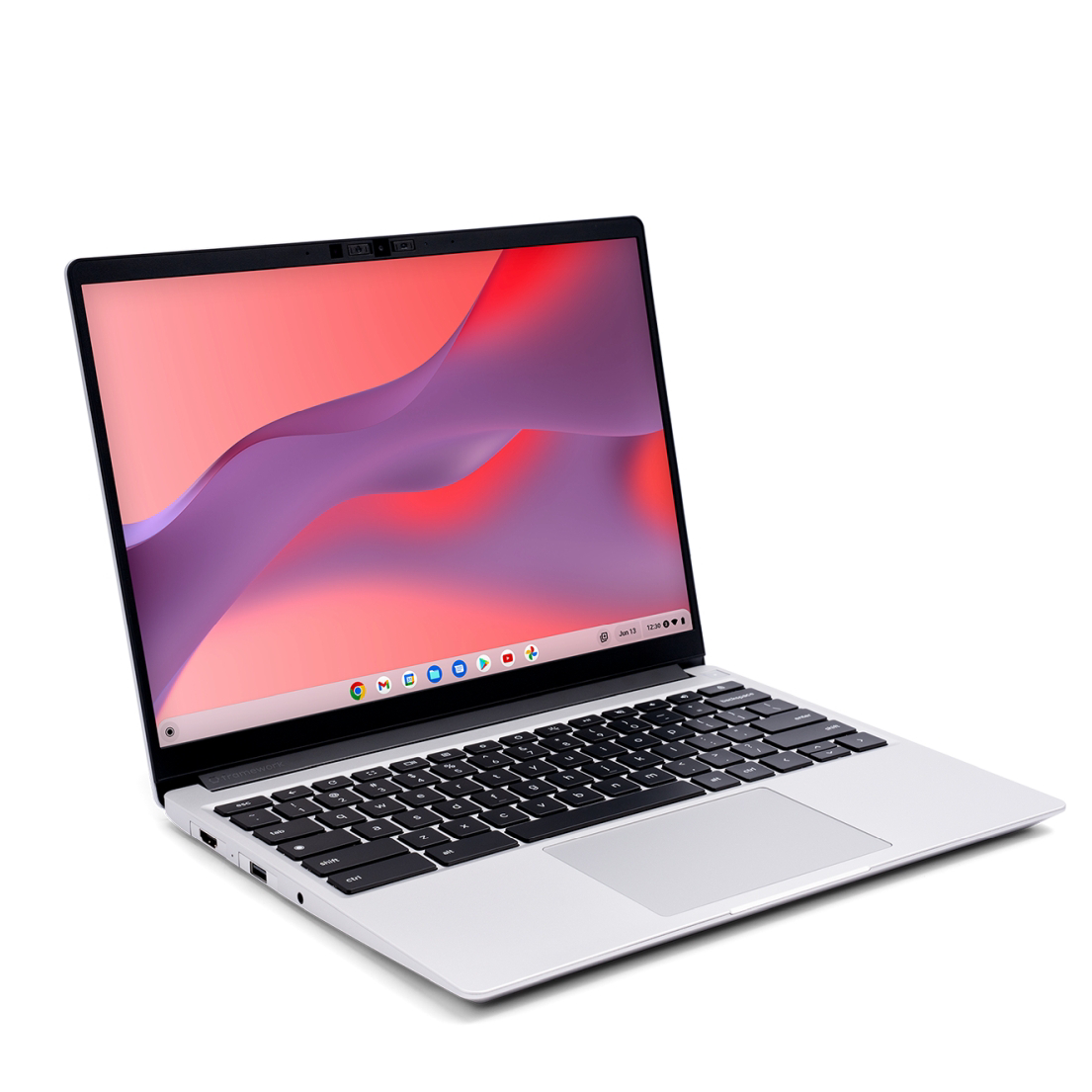
The Framework Laptop Chromebook Edition is a truly unique Chromebook that's designed to be easy to upgrade and repair, making it a great investment for folks who prioritize long-term value. The option to buy and hot-swap ports via the unique Expansion Card system is also unparalleled.
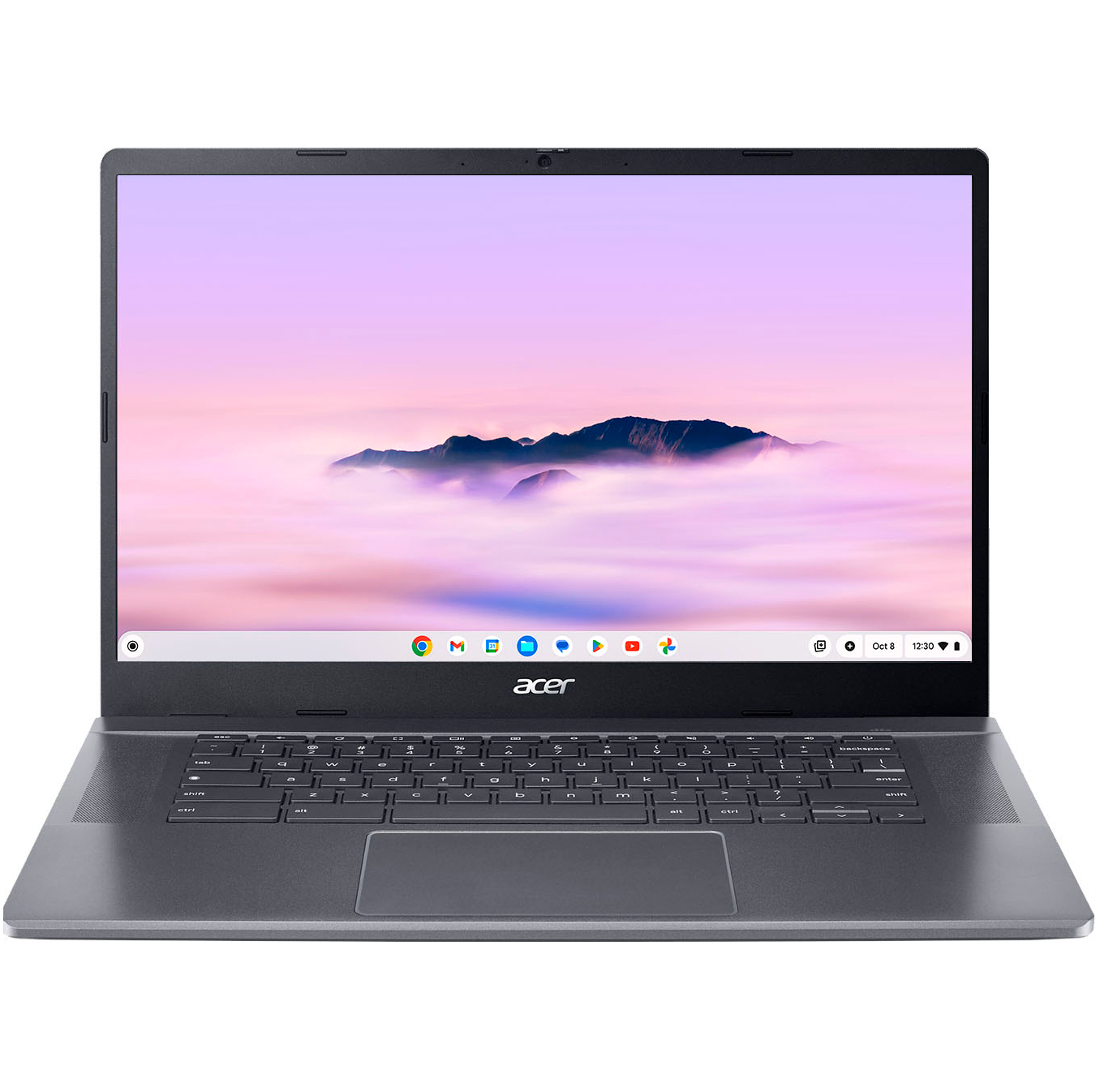
To fully harness the AI-powered Chromebook Plus features driven by Gemini, you’ll need a device with a large display, an excellent keyboard, robust battery life, and an unbeatable price. Acer’s Chromebook Plus 515 delivers all of this in one impressive package.

I've been using and testing all kinds of laptops for roughly 18 years now, and after starting a passionate love affair with the simplicity and usability of ChromeOS laptops over the past half decade, I know a thing or two about picking the best Chromebooks.
The best Chromebooks you can buy
Why you can trust Tom's Guide
The best overall
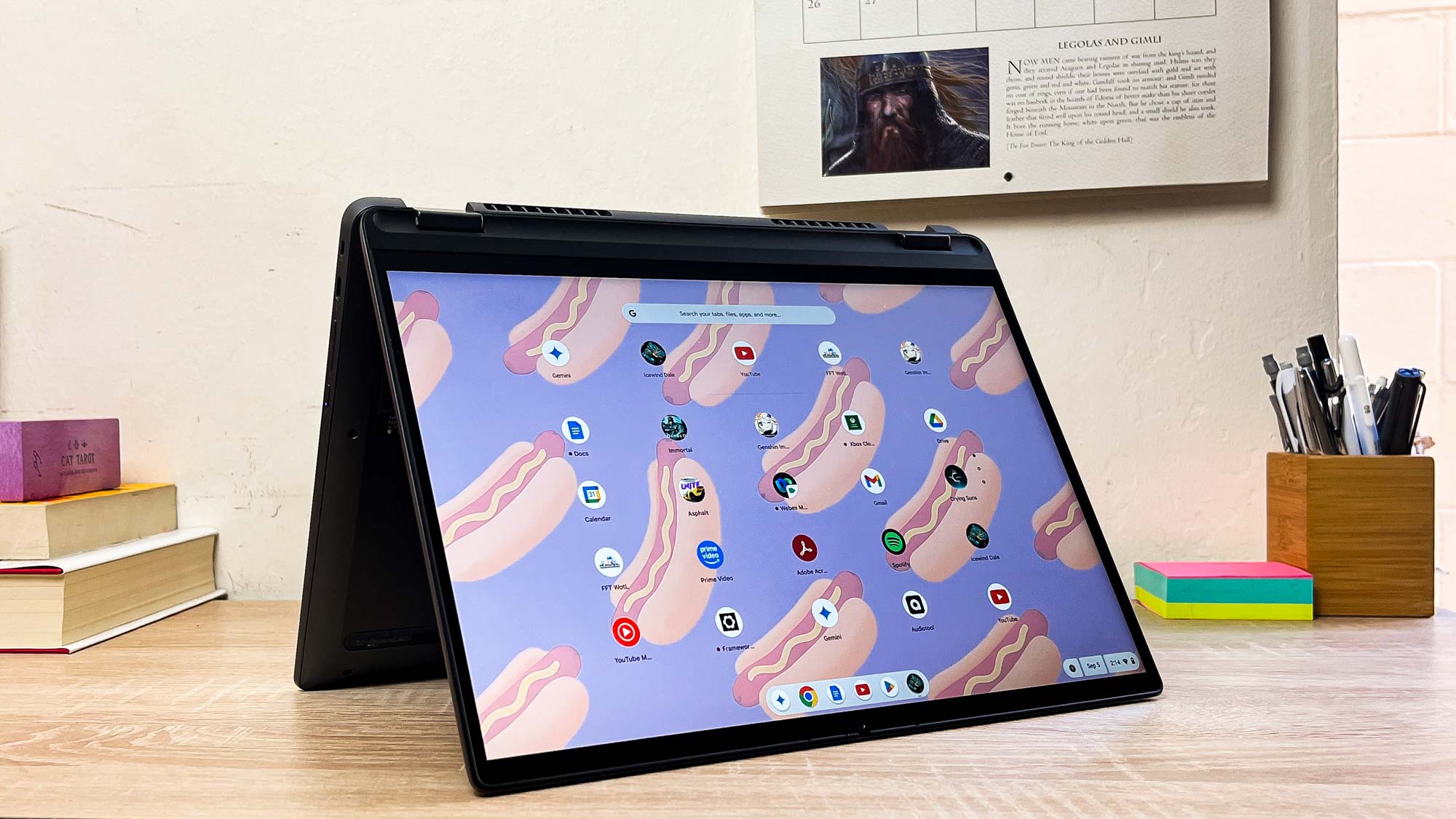

Specifications
Who is this for?
The Lenovo Flex 5i Chromebook Plus is a good all-around Chromebook 2-in-1 that's aimed at students, professionals and anyone who needs a cheap, sturdy Chromebook with a touchscreen that rotates 360 degrees, so you can use it like a hefty Chrome tablet.
Why is it the best overall Chromebook?
The Lenovo Flex 5i is the best buy on this list with serious value for money! It's form factor is versatile for everyone, the ergonomics are stellar for hard workers, there's enough power under the hood to run apps without any slowdown, and the display is bright and colorful for binging to your heart's content.
What do we like?
👍 Great, versatile design: As Alex put it in his review, the Flex 5i is a cheap Chromebook that doesn't look or feel like it. The construction looks utilitarian and feels durable in the hand, with a smooth but rigid 360-degree hinge for the display and a comfy keyboard.
👍 Gorgeous touchscreen: Chromebooks don't have to go this hard on display quality, but Lenovo has gone all in with a 14-inch IPS touchscreen panel with 16:10 aspect ratio and FHD resolution. It's bright, colorful and responsive.
👍 Impressive power for a Chromebook: Like you'll see from all the picks on our list, they're Chromebooks — don't expect the world. But with the 13th Gen Intel Core i3 and 8GB of RAM running behind the scenes of the incredibly processor-light ChromeOS, everything is zippy.
What don’t we like?
👎 Battery life is mid: Yes, the switch to M3 has brought the highly-requested support for two external monitors rather than one, but the improvements over M2 are very incremental.
👎 No stylus: I see a touch screen — I wanna doodle. So what gives on not packing a stylus in? This will be an optional extra you'd have to pay for.
Bottom line
Put simply, the Lenovo Flex 5i is the embodiment of cheap and cheerful. This is the perfect balance of value for money and premium quality, with its great keyboard and lovely display to get stuff done. Provided you can look past the average battery life, this is a stellar choice.
The best 2-in-1
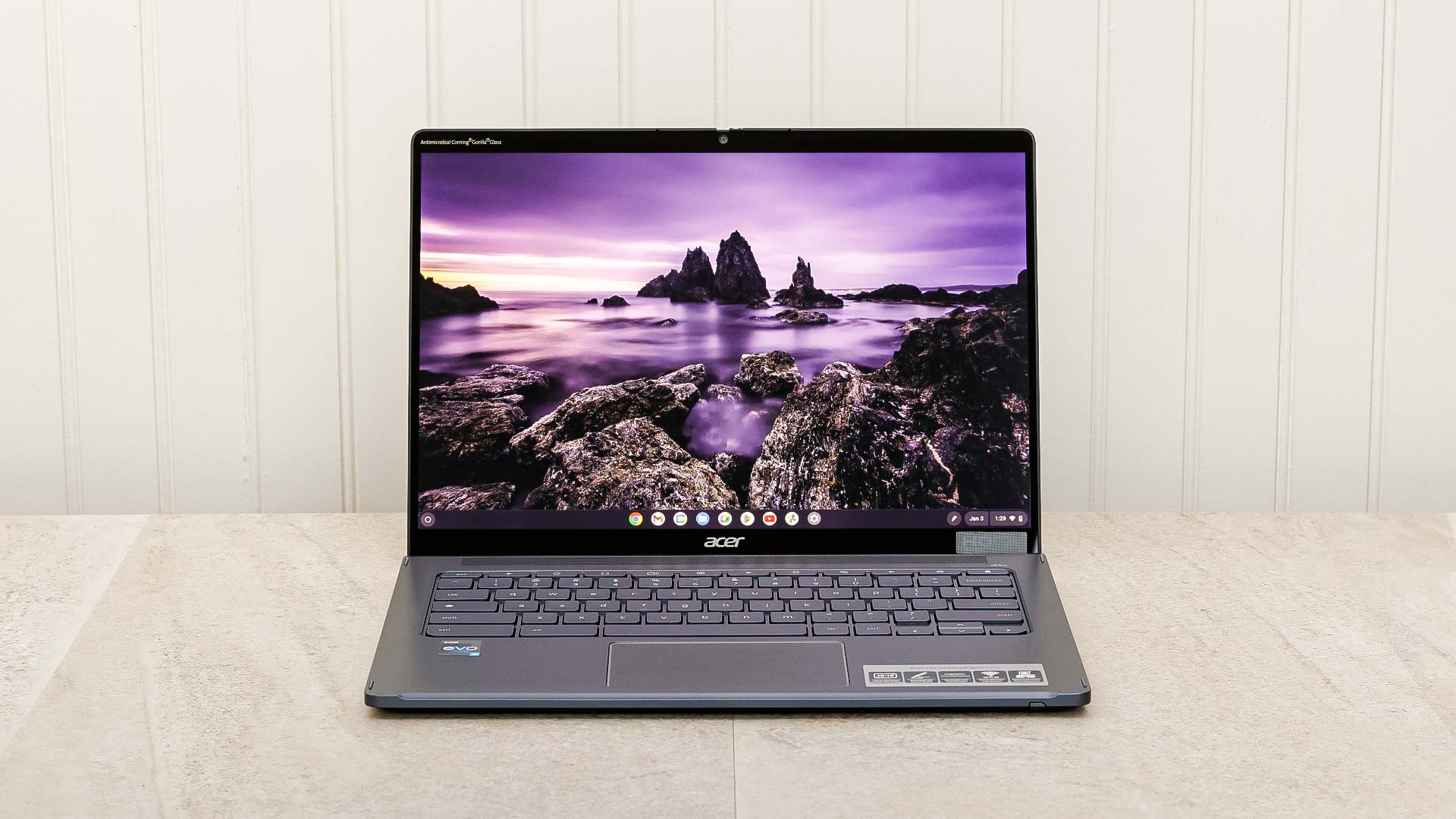
Specifications
The Acer Chromebook Spin 714 ($729 to start) is what we recommend as the best 2-in-1 Chromebook for most folks beacause it offers good battery life and speedy performance. Plus, it comes with a handy travel mouse and stylus, making it a great tool for getting things done on the go.
The HDMI out and USB-A port mean you still have basic connections without needing a dock or adapter cables, but USB-C and Thunderbolt 4 are also on tap for current- and next-gen devices, which you don't always get on even modern Chromebooks.
Plus, the 14-inch display looks good in person and is bright enough, even if it can't compete with other premium Chromebooks in that department. The included mouse and stylus give you lots of options for getting work done in either laptop or tablet mode. Most importantly, the battery should last you an entire workday.
Read our full Acer Chromebook Spin 714 review.
Who is this for?
The Acer Chromebook Spin 714 is a more premium option that makes for the best 2-in-1 Chrome laptop you can buy. This is definitely for the more upmarket crowd that wants the best on-the-go.
Why is it the best 2-in-1 Chromebook?
Put simply, it's because of the attention to detail Acer has put into crafting this machine. The Chromebook Spin 714 is Chromebook Plus compatible with its Intel Core i5 chip — guaranteeing speedy performance. On top of that, there's decent connectivity, a 10+ hour battery life, a gorgeous screen, and the mouse + stylus come included in the box.
What do we like?
👍 Utilitarian aesthetic: The uniform aluminum shell has a lovely grey hue with a subtle blue undertone. The aesthetic feels simple and utilitarian, which is everything I want from a laptop — paired with a rigid 360-degree hinge that inspires confidence.
👍 Vivid display: The 14-inch 3:2 display has a lovely tallness for productivity uses, alongside a rich sRGB color gamut and decent brightness for viewing in direct sunlight.
👍 Performance and ports galore: That Intel Core Ultra 5 chip is seriously zippy for tackling ChromeOS tasks, while keeping that touchscreen super responsive — even while multitasking (thanks to the 8GB of RAM).
What don’t we like?
👎 Webcam = potato: That 720p webcam isn't anything to write home about. It's got a mushy detail and is not good in challenging lighting conditions.
👎 No SD Card reader: Come on now. This machine is near on 700 bucks, and you're not getting an SD card reader!?
Bottom line
The Acer Chromebook Plus Spin 714 is a mighty machine of performance and power efficiency in a premium shell. From its build quality to its capability, you're sure to love it.
Any big Acer Chromebook Plus Spin 714 deals?
Right now, you can bag $130 off the best 2-in-1 Chromebook! Plus, did we mention it's got over 10 hours of battery life!?
The best Chrome tablet
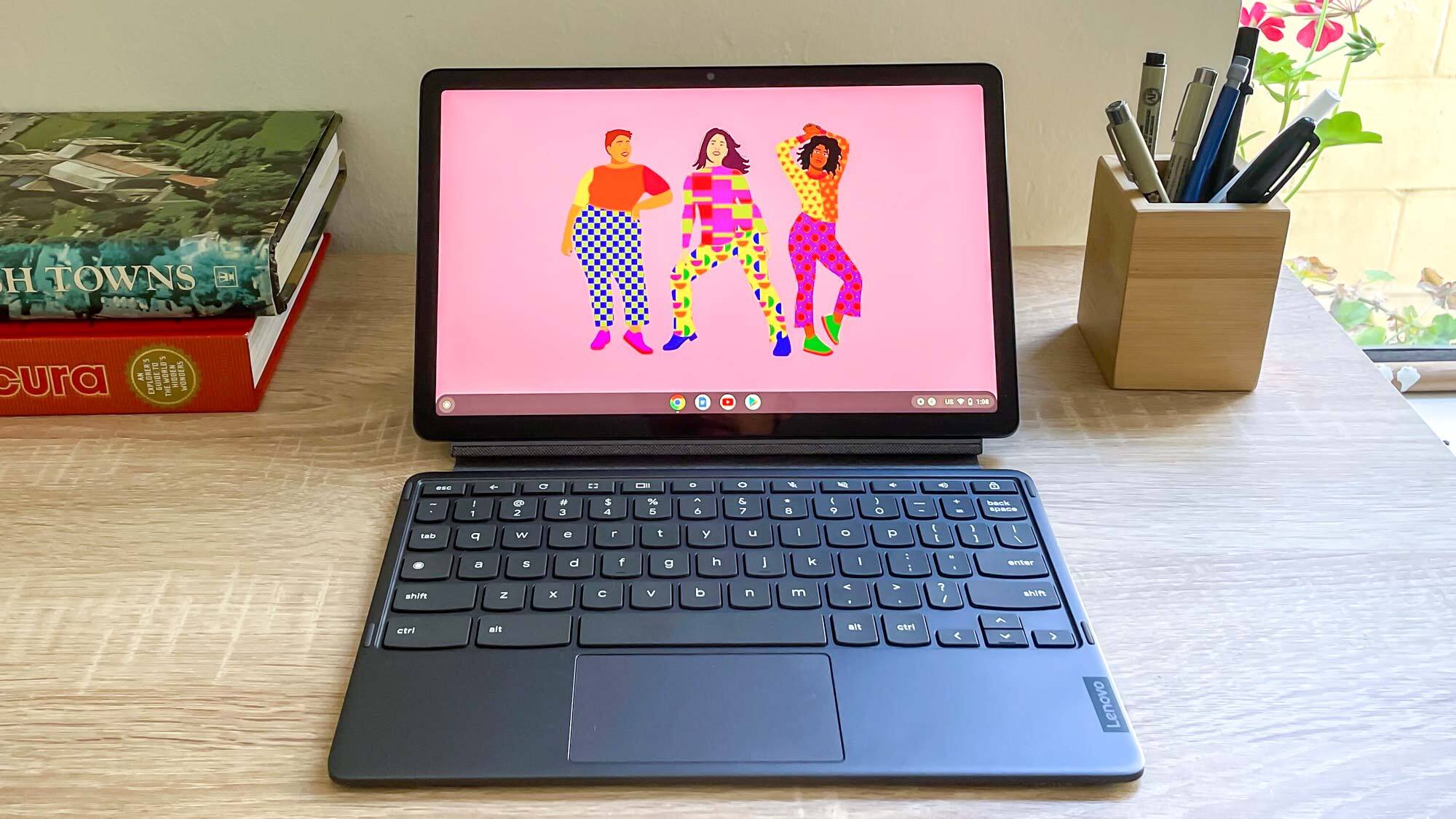

Specifications
Who is this for?
If you're looking to dip your toes into ChromeOS as a tablet, the Lenovo Duet 3 is the right one for you with a low price and big capabilities.
Why is it the best Chromebook tablet?
The Lenovo Duet 3 gives you everything you need for a solid Chromebook tablet experience. A speedy Qualcomm chip, a gorgeous display, solid ergonomics on that keyboard cover and ChromeOS translates well onto a touch panel.
What do we like?
👍 Great screen: The fundamental of any good tablet is having a nice screen to look at and touch. That's what the Chromebook Duet 3 offers with an 11-inch panel with 2,000 x 1,200 pixel resolution for crispy pictures with plenty of color and brightness.
👍 Sturdy, useful design: With the Lenovo attention to detail, the Duet 3 feels reliably durable in the hand, and packs a second USB-C port for expanded connectivity.
👍 Performance and ports galore: That Intel Core Ultra 5 chip is seriously zippy for tackling ChromeOS tasks, while keeping that touchscreen super responsive — even while multitasking (thanks to the 8GB of RAM).
What don’t we like?
👎 Webcam = potato: That 720p webcam isn't anything to write home about. It's got a mushy detail and is not good in challenging lighting conditions.
👎 No SD Card reader: Come on now. This machine is near on 700 bucks, and you're not getting an SD card reader!?
Bottom line
The Duet 3 makes important improvements over the original Duet in some key ways — adding a second USB-C port for more connectivity, upping the performance and upgrading the display. Of course, when it comes to tablets, the iPad is kind of a gold standard in this area. But don't count this Chromebook tablet out.
The best for gaming
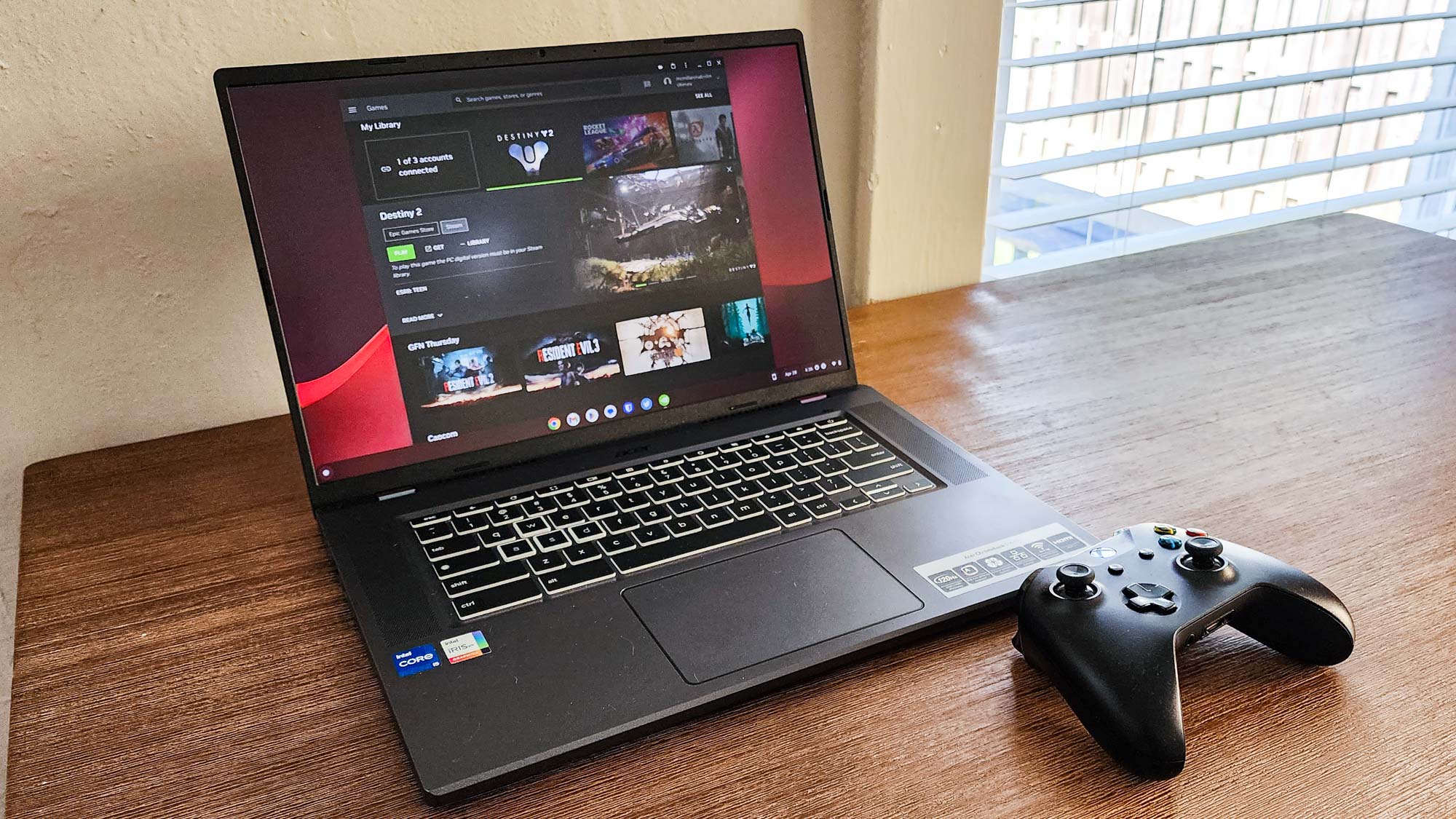

Specifications
Who is this for?
This is the one to buy if you're a gamer. Yes, the concept of a "gaming Chromebook" is a bit of a weird one to think about. But cloud gaming services like Xbox Game Pass and Nvidia GeForce Now are at a point where they can offer reliable gaming experiences with little-to-no latency.
Why is it the best gaming Chromebook?
To determine a gaming Chromebook, it's not the same as a gaming laptop. We're not looking for a powerful GPU, rather the other key elements — performance is strong for game streaming, the design is ultraportable to take around with you and the battery life is stellar.
What do we like?
👍 120Hz display: Did you know that GeForce Now supports 120Hz refresh rates? Well lucky you, the 16-inch panel in here supports that too for super fluid cloud gaming.
👍 Strong power: To run these game streaming apps, this comes armed with a stacked 12th Gen Intel CPU, 8GB RAM and a 256GB SSD to maintain that performance.
👍 Ethernet ready: WiFi is pretty reliable, but with game streaming, it could cause some stuttering. That's where the built-in gigabit ethernet port comes in to offer a smooth fast connection and minimize dropouts.
What don’t we like?
👎 Poor sound quality: Headphones are pretty much a requirement. These tinny speakers distort very easily and just sound a bit naff.
Bottom line
Advancements in Chrome gaming have been happening with cloud services improving in selection and playability. The Acer Chromebook 516 GE is a great option to embrace it all — thanks to that big 16-inch panel and ethernet connection.
The best for DIYers
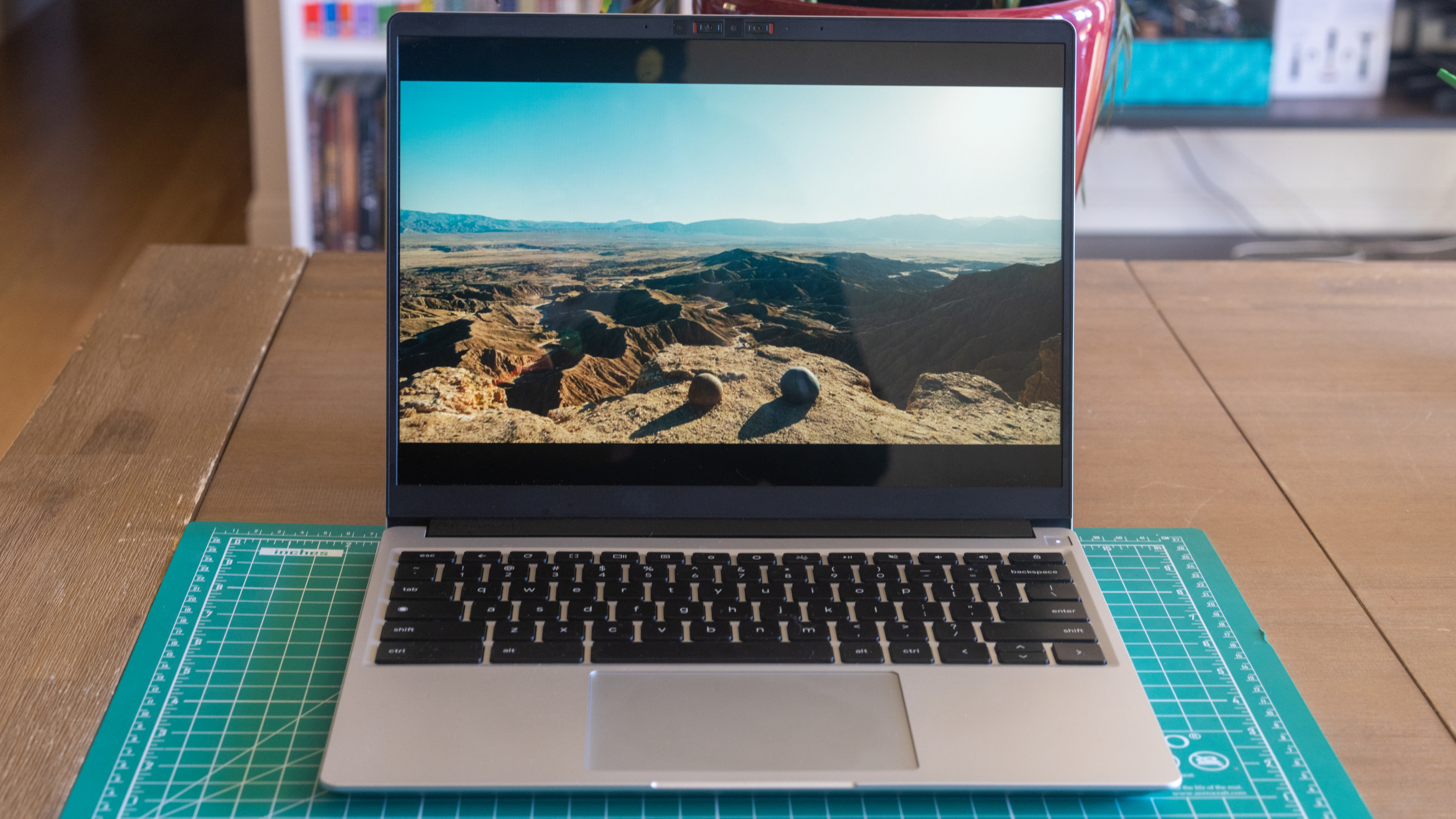

Specifications
Reasons to buy
Reasons to avoid
Who is this for?
If you don't want to be bogged down to the spec of laptop you buy, Framework's the way to go. The Chromebook Edition of its laptop comes with a screwdriver, so you can upgrade or repair any part of it yourself.
Why is it the best Chromebook for DIYers?
Upgradeability and repairability. What else do I need to say? With additional bolt-ons to switch your port array easily, and a super simple design that you can tear into and repair/upgrade any internal elements with just one screwdriver.
What do we like?
👍 Marvelous modular design: Nearly identical in design to the Windows Framework Laptop, this utilitarian frame with the lovely gear icon emblazoned across the front feels sturdy while being impressively modular for upgradeability.
👍 Excellent keyboard and touchpad: One bit that you won't be able to upgrade is the keyboard and touchpad. But that won't be a problem whatsoever, as the chiclet keyboard feels great and the pointer has a great smooth surface and tactile click.
What don’t we like?
👎 Poor speakers: Yes, they are loud. But loud does not mean good, and these are rather tinny.
Bottom line
So where does that leave the Framework Laptop. It does tickle a particular niche, but in many ways its what I'd love the future of laptops to be — impressive modularity to maintain your own system and limit e-waste by just upgrading the chassis you have.
The best AI Chromebook
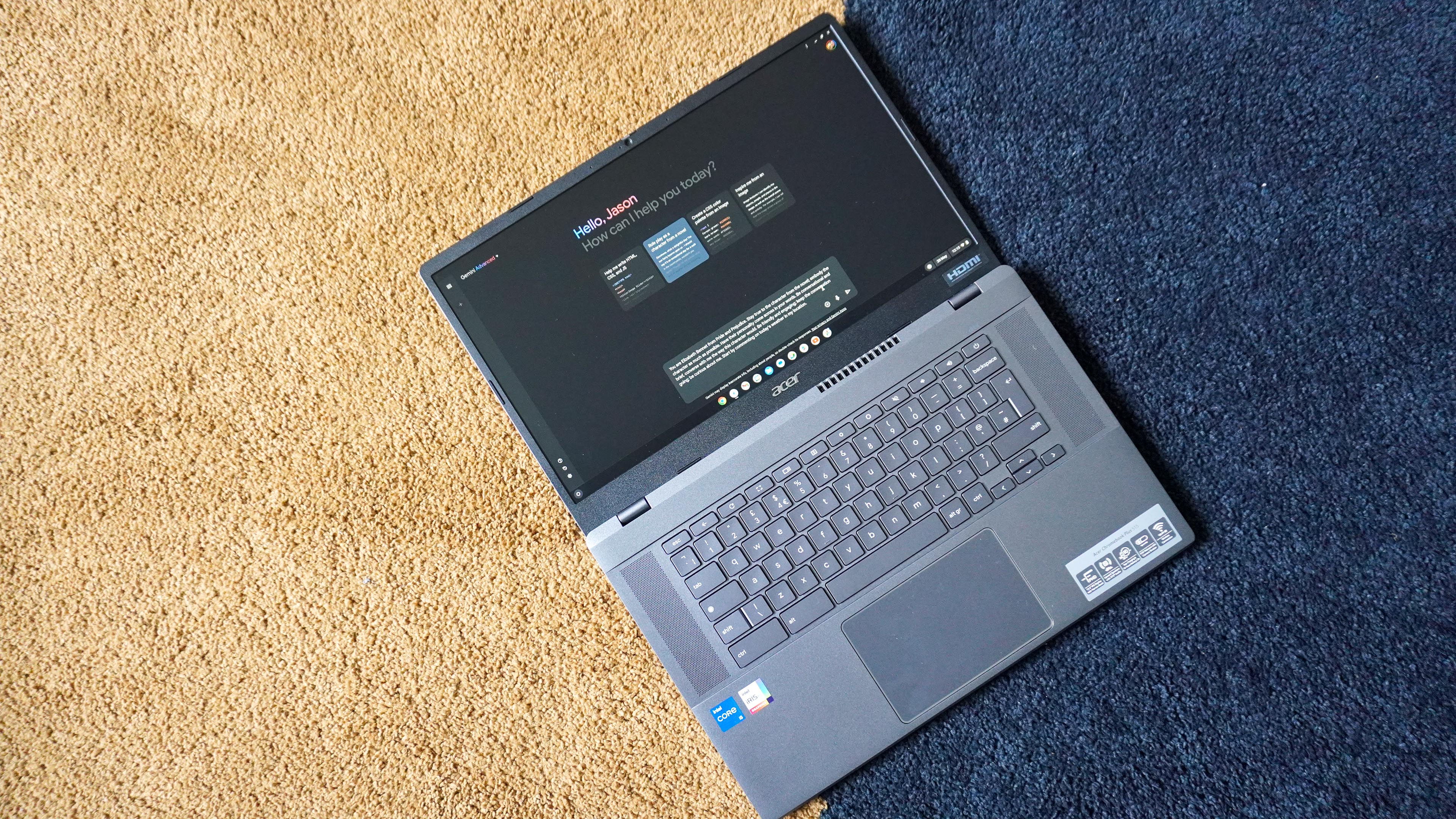
Specifications
Reasons to buy
Reasons to avoid
Who is this for?
The Acer Chromebook Plus 515 is not just a standard big screen Chromebook that is great for use at home and on-the-go for hard work and entertainment, it also supports all the Gemini features that comes with a Chromebook Plus laptop.
Why is it the best AI Chromebook?
For a seriously affordable price, you can enjoy all of the best Gemini AI features boosting your productivity — all on a Chromebook that is seriously nice to use with a big screen and nice feeling keyboard, along with a decent battery life.
What do we like?
👍 Big, colorful display: Yes, it's only 1080p, which means you'll be able to notice the pixels on this 15.6-inch panel. But for the color production and color on offer here, the resolution can be easily forgiven — plus when it comes to Chromebooks, full HD is definitely on the higher side.
👍 Great-feeling keyboard: Commonly, Chromebooks make compromises on the keyboard by giving you a bit of a spongey board in favor of cost-cutting. Here, however, there's a nice tactility to the whole thing.
👍 Gemini AI features are genuinely useful: So far, we've seen Copilot+ PC features feel like a bolt-on, and Apple Intelligence for MacBooks buried under a lot of menus. For ChromeOS, Google is out in the lead in terms of UI. Don't get me wrong, without an NPU, there is no on-board AI — everything is in the cloud. But in terms of usability, this is one of the best.
What don’t we like?
👎 Cheap feels: Emphasis has been placed on AI performance and keyboard, but in its place, the whole laptop feels cheap in the plastic surfaces and the spongey trackpad.
Bottom line
In terms of the whole Chromebook market, it's easy to ignore the Acer Chromebook Plus 515 as just another option. But don't skip on it if you want a good big-screen experience for bingewatching and AI productivity at its heart.
Battery benchmarks: comparison
Battery life is one of the key things you should look at when deciding which Chromebook to buy, which is why we run every laptop we review through a series of battery tests to see how long it lasts on a full charge.
These tests do not reflect real-world use patterns since we have to set every laptop to the same settings in order to do fair comparisons. Thus, while the times listed here are accurate and useful as a comparison point, your own experience with a laptop's battery life will likely vary.
This is because when we run our battery test we set the laptop's display to 150 nits of brightness and have it endlessly browse the web via Wi-Fi until it dies. However, when you use your laptop you're likely adjusting brightness on the fly, doing all sorts of different tasks while perhaps listening to music or watching a video at the same time, and generally putting the machine through more of a workout than it gets in our test.
So while I stand by our testing and the battery life results we compare in the chart below, I want to be clear that your own experience will vary!
Laptop | Battery life (tested) |
Lenovo Flex 5i Chromebook Plus | 7:36 |
Acer Chromebook Plus 515 | 8:16 |
Acer Chromebook Spin 714 | 10:45 |
Lenovo Chromebook Duet 3 | 10:30 |
Acer Chromebook 516 GE | 7:40 |
Framework Laptop Chromebook Edition | 8:07 |
Chromebooks vs. laptops
One of the most common questions I get goes something along the lines of "What's the difference between a Chromebook and other laptops?"
While Chromebooks typically aren't as capable as laptops running Windows 11 or macOS Sequoia, they're also typically cheaper and easier to use. This is because Chromebooks are built to run on ChromeOS, Google's web-based operating system.
ChromeOS doesn't require much raw computing power or storage space to run, but it does require one key thing to be maximally useful: A fast Internet connection. That's because ChromeOS is designed to push as much work as possible to the cloud (i.e. far-away computers you connect to over the Internet) rather handling it locally, so it can run on as many devices as possible.
So while Chromebooks are typically cheaper than any competing laptops, they also lose a lot of their power when they lose their Internet connection. Sure, you can still work on your Google Docs saved in offline mode and maybe stream some episodes of a show you've saved to your Chromebook's storage drive, but unless you've taken precautions to prepare you're not going to be able to use your Chromebook for much without a good connection.
But if you expect to be online basically all the time, say because you need a laptop for home learning or just browsing the web while you're on the couch, a Chromebook is a great low-cost choice. They're perfect for anything you do on the web, whether that's streaming your favorite shows or researching projects for school.
If you pay for a great cloud gaming service like Nvidia's GeForce Now or Xbox Game Pass you can even play some of the latest and best PC games right on a Chromebook—check out our guide to how to use GeForce Now on a Chromebook for a step-by-step walkthrough, but remember: you have to have a fast, strong Internet connection for best performance.
How to choose the best Chromebook for you
How to choose the best Chromebook for you
Finding the best Chromebook these days begins with a simple question:
Do you need a touchscreen? An increasing number of Chromebooks offer 2-in-1 designs with a touchscreen, allowing you to use Android apps from the Google Play store. However, those systems tend to be on the pricier side. If you want just a basic laptop on the cheap, a Chromebook without a touchscreen is the way to go.
Screen size: As a general rule, an 11-inch display is good for younger kids, but a 13-inch display is better for older students and business users on the move. If you want a Chromebook as a primary home laptop, we would opt for a 14-inch or 15-inch display..
Performance: Are you buying this for a kid who's got modest needs? A Pentium or Celeron processor should be enough. A Core M or Core i5 CPU is better for those who want more performance. Most budget Chromebooks start with 4GB of RAM, but we would get 8GB or more if you plan to work with a lot of tabs open. Because Chromebooks rely on the cloud, local storage isn’t that important, which is why 32GB tends to be standard. You’ll find 64GG to 128GB on more premium models.
Chromebook or Chrome OS Flex? One last thing to consider: do you need a Chromebook, or do you just want Chrome OS? Because if it's just the software you like, Google is starting to offer Chrome OS Flex, an education/enterprise-focused version of Chrome OS that you can install yourself on a Mac or PC. If you're of a technical mindset and have an old laptop that could use some up-to-date software on it, you could always give this a try.
Frequently asked questions
What does 'Chromebook Plus' really mean?
This is a great question, and I get it a lot because in late 2023 Google rolled out a new classification of Chromebook: The Chromebook Plus.
The first Chromebook Plus Chromebooks started shipping in October 2023, and they're notable because Chromebooks which qualify as Chromebook Plus models will get access to some AI features that other Chromebooks won't.
Laptops which qualify as Chromebook Plus get improved video calls thanks to built-in AI features which help enhance things like image quality and lighting, for example. And select apps, like the Google Photos app, get extra AI-powered features like the Magic Eraser tool made famous by the Google Pixel phones.
So in short, Chromebook Plus is a new category of Chromebook that gets access to special features not available to all Chromebooks. To qualify for the Chromebook Plus program, a Chromebook must meet at least the following system requirements:
CPU: Intel Core i3 12th Gen or above, or AMD Ryzen 3 7000 series or above
RAM: 8GB or more
Storage: 128GB or more
Webcam: 1080p+
Display: 1080p IPS or better
If a laptop qualifies as a Chromebook Plus you should see a badge to that effect somewhere on the laptop's packaging.
How much should I spend?
In general, I recommend you spend as little as possible while getting a laptop that will meet all your needs for at least the next 3-5 years.
When buying a Chromebook, you should not be spending more than $800 unless you really want something fancy. In fact, most good Chromebooks can be yours for under $600, and while units in the $300-$500 range will be weak and potentially clunky (don't expect fancy trim), they should be more than good enough for browsing the web, writing emails and taking video calls.
Stay far away from any Chromebook which costs significantly more than $1,000. Some companies, like HP, occasionally sell Chromebooks with four-figure prices as premium business ultraportables or luxurious daily drivers, and if you're spending that much you should probably just get yourself a MacBook Air or Dell XPS 13.
How long will my Chromebook get updates?
You should check with your Chromebook manufacturer to get the most accurate and up-to-date information about how long it will be supported with general software and security updates.
However, in general you can expect 5-10 years of support. Google has said that every new Chromebook will be guaranteed 10 years of security updates starting in 2024, though Chromebooks released since 2021 will also have access to said updates.
How do I find the best Chromebook deals?
Chromebooks are typically considered cheap laptops, but that doesn't mean they're always affordable. As Chromebooks advance and Google and other companies cram more features into them, the prices are only going to increase.
First and foremost, check out our guide to the best Chromebook deals around right now. Our deals experts regularly look for great Chromebook sales and update that page regularly, so it's a good resource to bookmark.
Second, Chromebooks are regularly on sale for discounted prices. So if you're looking for a deal, consider waiting for major shopping events like Boxing Day in the UK, Easter, Labor Day, back-to-school shopping season, Black Friday or Cyber Monday. During these sales events, retailers typically roll out their biggest discounts on the broadest variety of Chromebooks. If you can afford to wait for a sale, do it!
Should I get a clamshell Chromebook or 2-in-1?
There are two major models of Chromebook available, and they have to do with how the screen folds.
Clamshell Chromebooks look like classic laptops, with a hinge in the middle that attaches the screen to the keyboard deck. The hinge doesn't extend farther than 180 degrees, so you can count on having the screen sturdily propped in front of the keyboard for marathon work sessions.
But 2-in-1 Chromebooks typically have some way to transform them into a tablet, either by detaching the screen from the keyboard or flipping the keyboard around 360 degrees to lay flat against the back of the screen. These Chromebooks have to have touchscreens, which is nice to have when you're running Android apps on your Chromebook. And the fact that they double as tablets can be nice when you're traveling or lying in bed and just want a screen to watch videos on.
However, 2-in-1 Chromebooks tend to be more expensive and their keyboards are rarely as good as the best you find on clamshell models. So if you want a productivity machine or something cheap, you probably want to lean more towards clamshells.
How much RAM do I need?
Storage isn't hugely important on a Chromebook since most of your work is stored online in cloud services like Google Docs or Microsoft 365. But RAM is more valuable because its what your Chromebook uses to store and move data around in memory in real-time.
That means having low RAM will cause your Chromebook to feel slow, sluggish and generally unsteady during daily operation. So in general I recommend you get a Chromebook with no less than 8GB of RAM, because anything less can cause your machine to start to feel slow and underpowered. If you can get a Chromebook Plus, so much the better.
If you see a Chromebook with 16GB of RAM, that's even better. But there's not much need to go above that, as 32GB of RAM and beyond is really only key when you're running demanding programs like modern games or video editing apps.
How we tested these Chromebooks
How we test these Chromebooks
To find the best Chromebook, we run every machine we review through a rigorous suite of benchmarks and real-world tests to gauge how it will perform during everyday use.
We measure the average brightness and color quality of each laptop's display using our in-house light meter and colorimeter. For general performance, we run our machines through tests that include JetStream 2 (a Web-based benchmarking suite that runs over five dozen tests designed to measure how well systems handle the kind of applications they’re most likely to encounter on the Internet) and a custom battery test that tasks the machine with browsing the internet over Wi-Fi until it runs out of juice.
For more information on our testing process, check out our guide to how we test.
Sign up to get the BEST of Tom's Guide direct to your inbox.
Get instant access to breaking news, the hottest reviews, great deals and helpful tips.

Jason brings a decade of tech and gaming journalism experience to his role as a Managing Editor of Computing at Tom's Guide. He has previously written for Laptop Mag, Tom's Hardware, Kotaku, Stuff and BBC Science Focus. In his spare time, you'll find Jason looking for good dogs to pet or thinking about eating pizza if he isn't already.
-
Don 1234567 Re: the Samsung Chromebook 4, I'm seeing two different models of it, differing by about $15. Tough to figure out what the difference is, but they have different model numbers, and are showing different processors: Celeron N4020 vs N4000. Is that it, just the different processor? The 4020 is the cheaper one.Reply -
Senor Sopa I usually look to Tom's Guide for advice, but I wonder about your credibility when you provide 2 links under the Lenovo Duet 3 Chromebook that go to the wrong device. Both the Walmart and Microsoft links point to the Duet 3i which is not a Chromebook at all but a Windows 11 device!Reply -
Don 1234567 ReplySenor Sopa said:I usually look to Tom's Guide for advice, but I wonder about your credibility when you provide 2 links under the Lenovo Duet 3 Chromebook that go to the wrong device. Both the Walmart and Microsoft links point to the Duet 3i which is not a Chromebook at all but a Windows 11 device!
I looked into this, and seems there is a Lenovo Duet 3 (and 3i) Chromebook, and a Lenovo Duet 3 (and 3i) Windows models. Tom's Guide linked to some Windows models. Albeit, another possibility is that Tom's Guide initially linked to the correct ones, but Walmart and Microsoft redirected, after Lenovo terminated the Chromebook models (as appears to be the case, on Lenovo's website).
Ridiculous how complex this has become. And read my comment above. Manufacturers are selling computers with the same name and model on the face of it, but hidden in the full, complex model number are some crucial details that differ from one to another. In this case, which processor is used. Which affects cost and performance.
Why all of these complex, manipulative games being played on buyers? Seems they are trying to confuse us.
And unfortunately, Tom's Guide, isn't helping.
